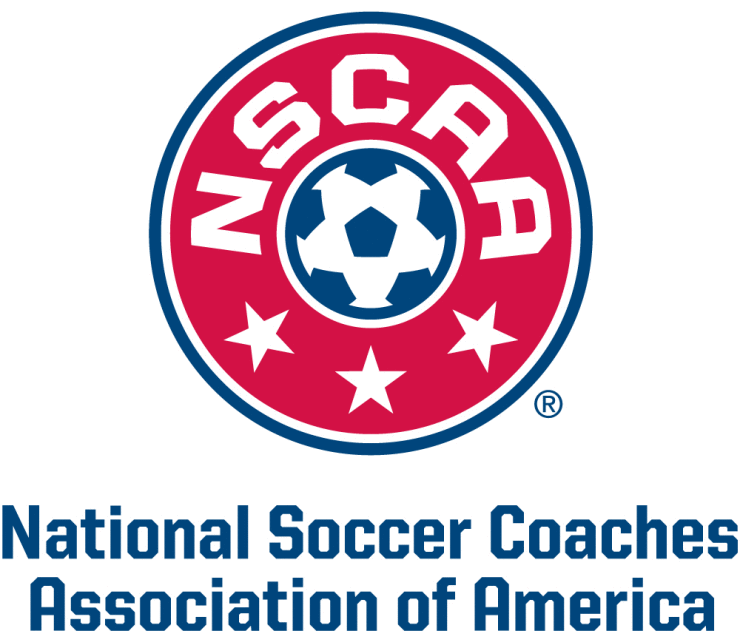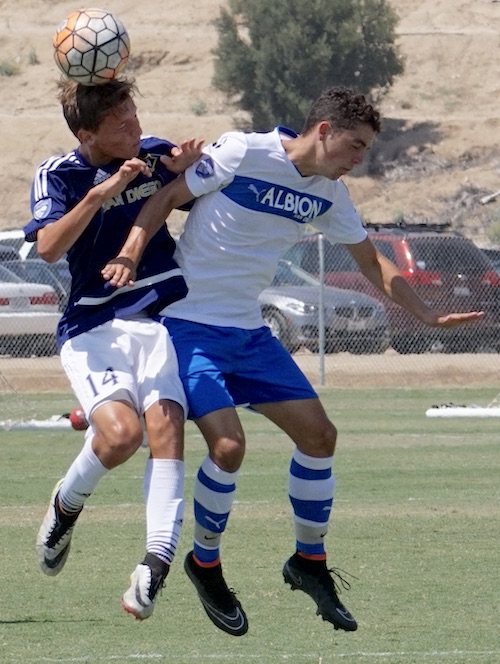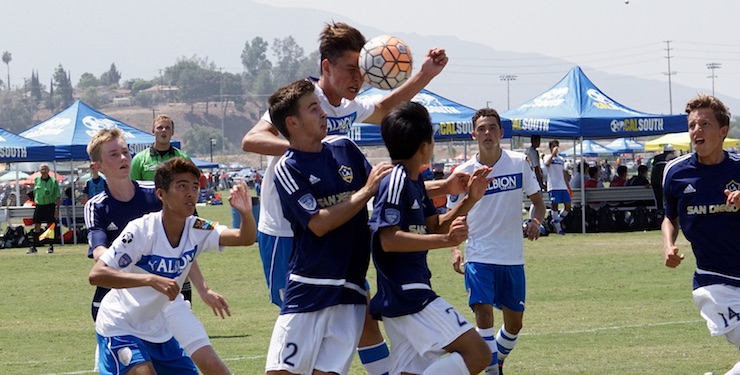NSCAA Release Interactive Course for Concussion Precaution
The NSCAA have announced their first online course to help educate soccer coaches on concussion precautions. The NSCAA’s ‘Get aHEAD Safely in Soccer™’ is available at no charge here with an NSCAA Diploma awarded upon completion. The announcement follows a recent ruling by U.S. Soccer, the governing body of soccer in America, that says as part of increased focus on player safety there should be no heading in games or practice for any players age 10 and under and a limited amount of heading for those ages 11 to 13.
Soccer News: The National Soccer Coaches Association of America (NSCAA) has announced its first interactive online course developed to educate soccer coaches on safer heading techniques for concussion precautions. The course was unveiled at a congressional briefing in Washington, D.C. hosted by Congressman Tom Rooney (R-Florida), co-chair of the Congressional Brain Injury Task Force.
The 30-minute course titled ‘Get aHEAD Safely in Soccer™’ is available at no charge here with an NSCAA Diploma awarded upon completion. The course demonstrates specific techniques, exercises, and practice activities that are available for download or print.
 “Eliminating head injuries in soccer is likely impossible, but reducing exposure and enhancing player safety is not,” said NSCAA Director of Coaching Education Ian Barker, whose instruction in the course focuses on techniques, practice activities and preparations. “What’s important here is that coaches emphasize correct positioning and stance for executing safe, purposeful, and effective headers.”
“Eliminating head injuries in soccer is likely impossible, but reducing exposure and enhancing player safety is not,” said NSCAA Director of Coaching Education Ian Barker, whose instruction in the course focuses on techniques, practice activities and preparations. “What’s important here is that coaches emphasize correct positioning and stance for executing safe, purposeful, and effective headers.”
A recent ruling by U.S. Soccer recommends there should be no heading in games or practice for players age 10 and under and a limited amount of heading for those ages 11 to 13.
“As players come into the 11 to 13 age group with limited heading exposure, coaches are seeking direction on how to best bring them up to speed safely,” said NSCAA Chief Executive Officer Lynn Berling-Manuel. “We’re pleased to help lead this effort by partnering with leading health and industry experts to provide the trusted resources they need.”
 The NSCAA developed the course in conjunction with the University of Delaware Concussion Research Laboratory. Dr. Tom Kaminski, an expert at the University of Delaware in the areas of kinesiology and applied physiology, helped bring the science of strength and conditioning to the course.
The NSCAA developed the course in conjunction with the University of Delaware Concussion Research Laboratory. Dr. Tom Kaminski, an expert at the University of Delaware in the areas of kinesiology and applied physiology, helped bring the science of strength and conditioning to the course.
“The foundation of preventing injury is through neck and core strengthening exercises,” said Dr. Kaminski. “When we teach 11 to 13 year olds how to unite their torso, neck and head, they will protect themselves from injury. You could say we prevent the ‘bobble head’ effect.”
Dr. Kaminski has studied concussions during his career that began in 1998 with the University of Florida’s women’s soccer team. He helped developed the Smart Impact Monitor, developed by Triax Technologies, Inc., which is a headband with an embedded sensor designed to track head impacts in real-time. This measurement tool adds objectivity and documentation to the concussion management process and the teaching of heading in soccer.

“As the father of three boys who all play sports, I have long advocated on Capitol Hill to make youth sports safer for America’s children,” said Congressman Rooney. “While we all know it is impossible to eliminate all the risks of playing contact sports, educating coaches, players and parents is a key component in reducing such risks. This initiative is an innovative step to increase widespread awareness in how to properly head a soccer ball, to increase safety and decrease injury among players at all ages.”
Hank Steinbrecher, a long time college coach, former player, NSCAA member, NSCAA Honor Award winner and former Secretary General of U.S. Soccer was also in attendance along with Louise Waxler, Executive Director of McLean (Va.) Youth Soccer and past president of the NSCAA.
“Most youth coaches don’t know how to properly coach heading technique,” said Steinbrecher. “Based on some of the recent studies, I’m confident the course developed by the NSCAA will assist young players to enjoy the game safely for life.”
“As leaders of youth soccer organizations, we have a responsibility to our membership to ensure that our coaches are properly educated on every aspect of the game,” said Waxler. “The NSCAA has always been a leader in the area of soccer education at a global level and I will want every coach at McLean Youth Soccer to have this new NSCAA Diploma.”
Photo Credit: Diane Scavuzzo






